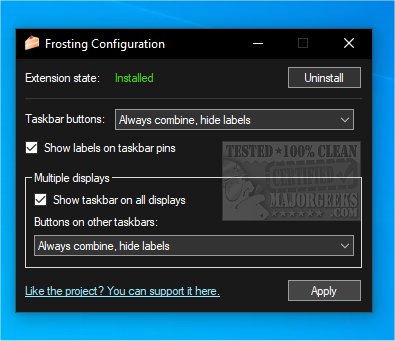Shell Frosting unlocks partially developed features in Windows Insider builds that are not readily accessible.
For those unfamiliar, if you opt never to combine, your taskbar will display each instance of an app as a separate entry rather than grouping them. So, let's say you have three Chrome windows open; each window will have its own dedicated spot on the taskbar instead of being merged into one entry that requires hovering over to view all three instances.
You now have the option to revert to the way apps are displayed on the taskbar in Windows 10, either stacked up or not. Windows 11 had removed this feature, which was frustrating for many users. However, in the test builds for Windows 11, you can now experience this feature and see how it works.
This app was developed in response to numerous requests for an updated Windows 11 taskbar with ungrouped items and labels. Although the code may be unstable, it can be made functional with some magic to eliminate critical crashes.
You can find the code that repairs various broken or incomplete operating system functions in the Frosting Library project. To easily install or uninstall the extension and configure the newly enabled features not yet covered by Windows' Settings app, you can use the user-friendly FrostingCfg interface.
We have also included the examples download to help get you started.
As of right now, Shell Frosting enables the following features:
Taskbar item ungrouping & labeling
-All builds that contain this feature should be supported (rs_prerelease 25246+, ni_prerelease 23403+)
-zn_release builds do NOT support this feature
We suggest creating a restore point, as this app is brand new.
Known issues
Taskbar items sometimes lack icons or have outdated icons and titles if grouping is off
The root cause resides within Windows-provided code and is not a bug caused by the extension.
A straightforward workaround is to turn the grouping on and back off again.
Download


